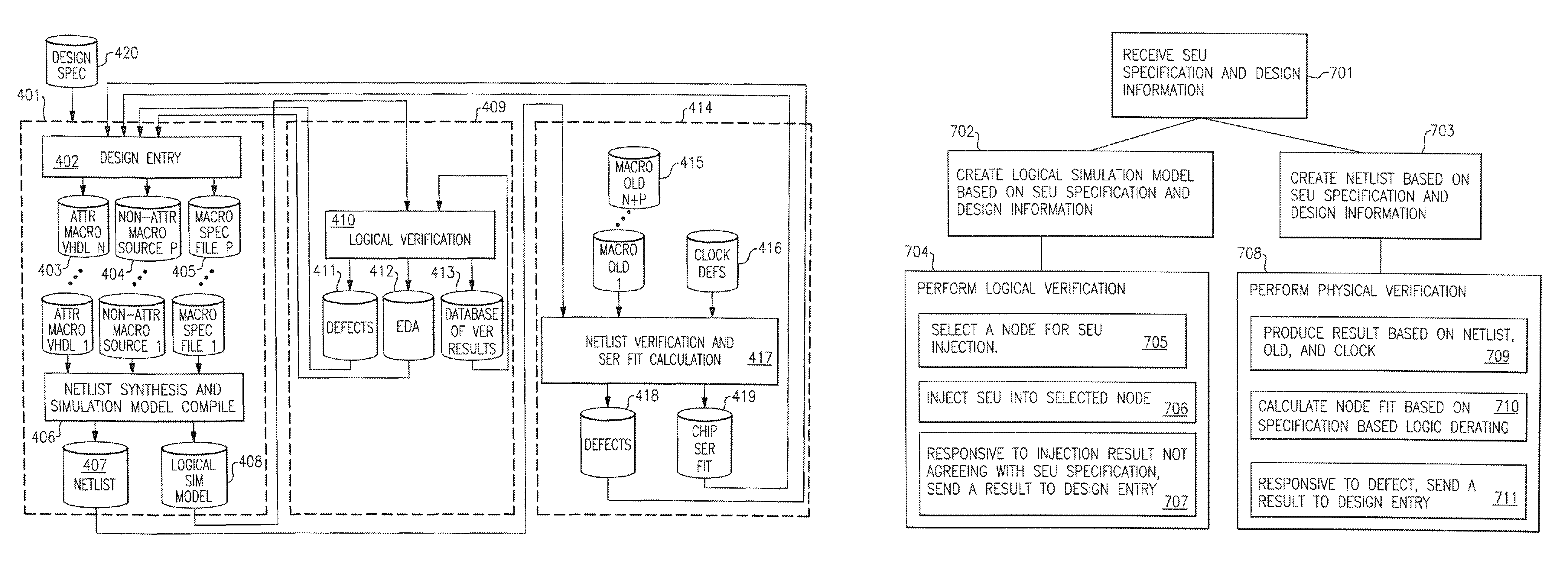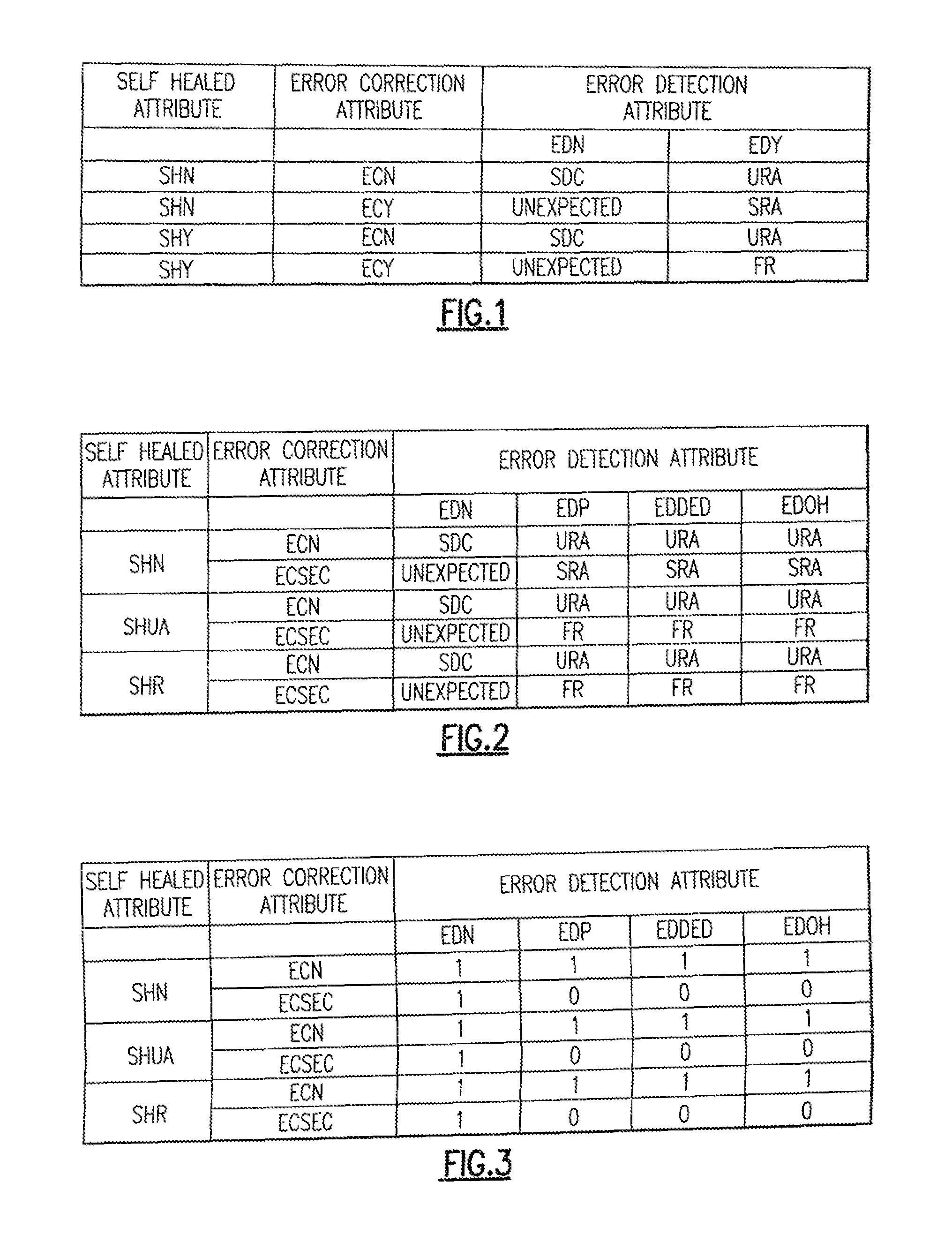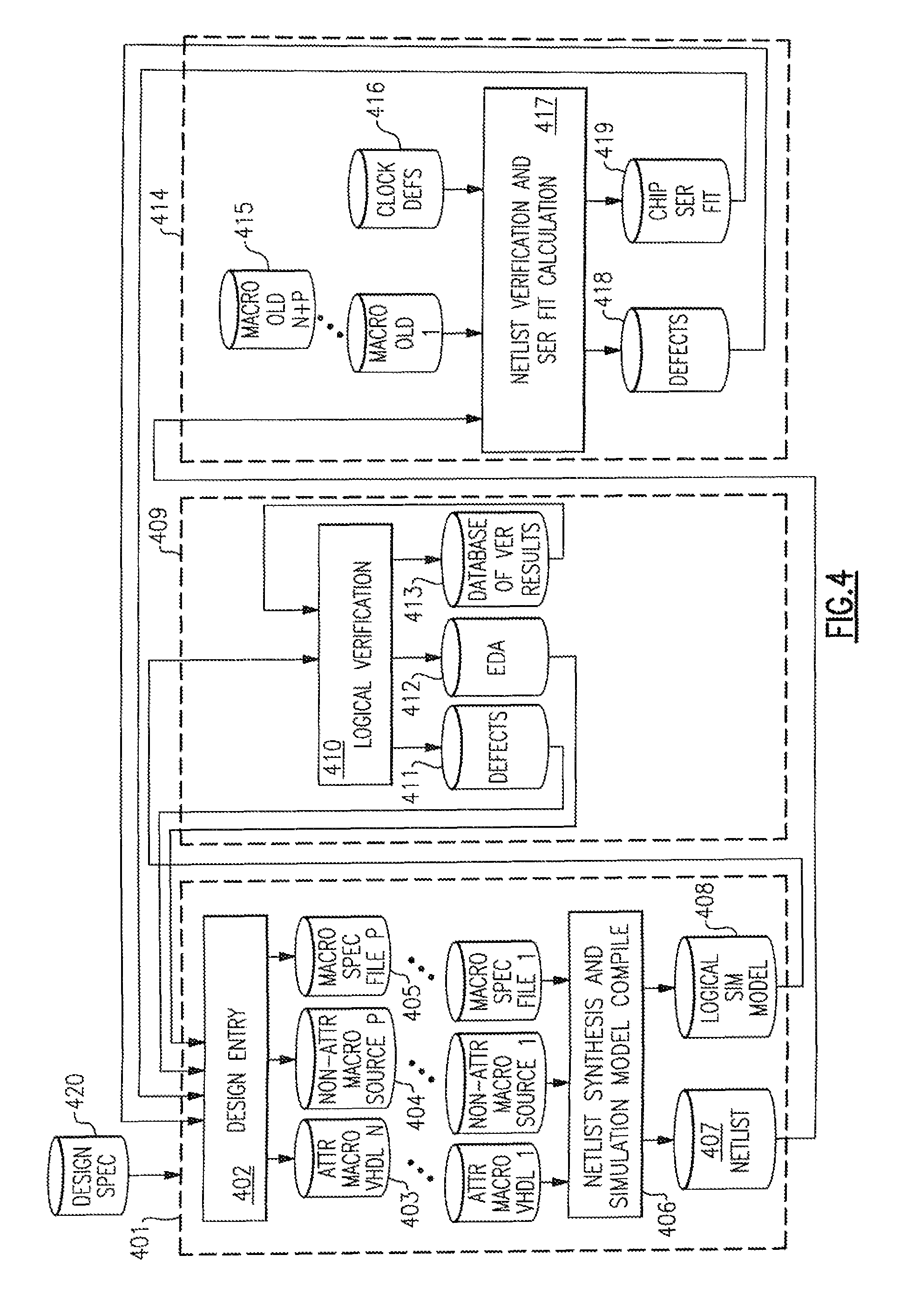Modeling for soft error specification
a soft error and specification technology, applied in the field of soft error rate (ser) estimation, can solve the problems of insufficient multi-threading processor approach, inability to model se events in iss or reference architecture, and affecting the processing efficiency of the error encountering thread
- Summary
- Abstract
- Description
- Claims
- Application Information
AI Technical Summary
Benefits of technology
Problems solved by technology
Method used
Image
Examples
Embodiment Construction
[0024]In accordance with an embodiment of the present invention, an integrated system, methodology, and program product for front end design employing a node-based SEU specification is provided. For description purposes, the embodiment's attributes are stated to be applied to latches in the design, but may also be applied to any node such as a wire, transistor gate, logic element, memory array, register array, latch, etc of the system without any changes to the essence of the invention.
[0025]One embodiment of the present invention introduces a node-based SEU specification, to be attributed uniquely to each latch, which specifies the behavior of the latch relative to an SEU in the categories of error detection, error correction, fault isolation, and self-healing (EDECFISH). This specification enables logical verification of the specification, targeted design changes to improve soft error tolerance, and accurate, regressible calculations of FIT rate due to soft errors. The EDECFISH at...
PUM
 Login to View More
Login to View More Abstract
Description
Claims
Application Information
 Login to View More
Login to View More - R&D
- Intellectual Property
- Life Sciences
- Materials
- Tech Scout
- Unparalleled Data Quality
- Higher Quality Content
- 60% Fewer Hallucinations
Browse by: Latest US Patents, China's latest patents, Technical Efficacy Thesaurus, Application Domain, Technology Topic, Popular Technical Reports.
© 2025 PatSnap. All rights reserved.Legal|Privacy policy|Modern Slavery Act Transparency Statement|Sitemap|About US| Contact US: help@patsnap.com



